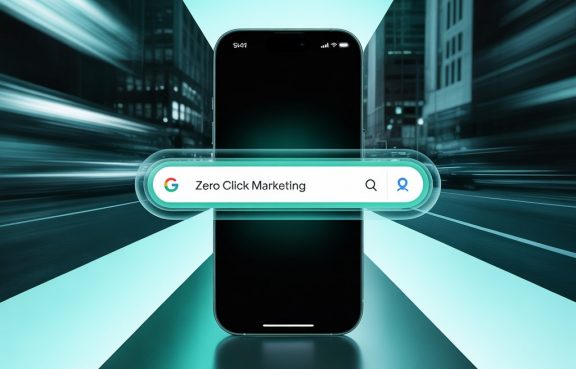
Zero Click Marketing Explained: Why Clicks Don’t Matter Anymore
Zero Click Marketing in 2025: The New Way to Show Up (Without Chasing Clicks)
The Old Game? Clicks. The New Game? Presence.
Not too long ago, digital marketing was simple. Write blog post, run few ads, and drive people to your website. The goal? Get that precious click.
But it’s 2025—and that game has changed.
Today, users expect answers fast. They want value upfront—without jumping through hoops. Whether it’s a crisp LinkedIn post, a swipe-through Instagram carousel, or an instant AI-generated answer on Google, people prefer content that delivers right where they are.
Enter Zero Click Marketing. It’s not about tricking people into traffic. It’s about making an impact, even if they never leave the platform they found you on. This isn’t limited to tactic—it’s a mindset shift.
What Is Zero Click Marketing?
Zero Click Marketing is about showing up with value—without asking for anything in return.
Let’s say someone searches something on Google. Instead of clicking a result, they find the answer directly in a snippet. That website may not get the traffic, but it still leaves an impression.
It’s the same story across platforms. Whether you’re on LinkedIn, TikTok, or Instagram, the content that gets remembered is the one that teaches, inspires, or solves a problem right in the feed.
This isn’t about holding back your best ideas. It’s about leading with them.
How You Can Actually Make It Work (Without Going Crazy)
Here’s how to embrace Zero Click without losing your mind—or your message:
1. Deliver Value Without Expecting a Click
Before you think about conversions, ask yourself: If someone saw only this one post, would it still help them? If yes, you’re doing it right.
2. Create Content That Feels Native to the Platform
Your message should fit in naturally. A case study on LinkedIn, a visual breakdown on Instagram, or a tip on X (Twitter)—each one should feel like it belongs.
3. Break Big Ideas Into Bite-Sized Pieces
Turn long-form content into multiple small nuggets. That blog post you wrote? Turn it into a tip thread, a story slide, or a how-to reel. Small doesn’t mean shallow—it means accessible.
4. Share Freely, Don’t Tease
The old “read more on the blog” doesn’t cut it anymore. People are drawn to content that gives them something real—right away. Let them walk away smarter, even if they never click.
Why This Shift Matters More Than Ever in 2025
Search Is Smarter, But Less Clicky
With AI now summarizing search results, many users don’t need to click through. If your content isn’t surfacing at the top—and providing real value—you’re invisible.
Social Feeds Have Replaced Search Bars
People are now exploring and learning more through platforms like short-form video apps and social networks—these places have become the new starting points for discovery. If your content isn’t made for the scroll, it’s likely getting skipped.
Emails Are Their Own Destination
Once used just to tease longer content, emails today need to carry their own weight. Subscribers expect insights and value right there in the inbox—no links, no fluff.
Tactics You Can Use Today
Repurpose long articles into carousels, Reels, or tweet threads.
Use visuals and captions to digest your message more clearly and quickly.
Include Q&A-style content on your site to develop visibility and authority in AI-based search.
Think beyond just clicks—what really counts now are the moments when people save your content, share it with others, or start a conversation around it.
Brands Already Doing It Right
Notion posts mini-tutorials and shortcuts directly to social—no blog link needed.
Neil Patel delivers actionable marketing strategies in his Instagram carousels.
Mailchimp packs insights and ideas right into their email newsletters—no redirect required.
Final Thoughts: This Isn’t the Death of Websites—It’s the Rise of Intentional Content
Zero Click Marketing doesn’t mean you stop building landing pages or writing blog posts. It just means you stop depending on them.
In 2025, the brands that win are the ones who understand this simple truth:
If your audience only sees one piece of your content, it should still be good enough to remember you by.
It’s not about traffic. It’s about trust. And when that trust is earned, everything else follows.
